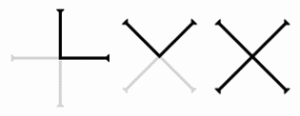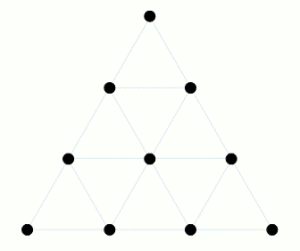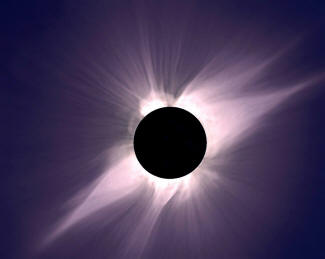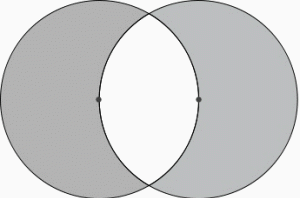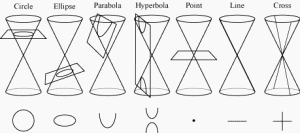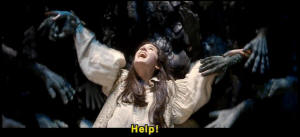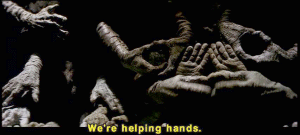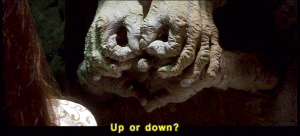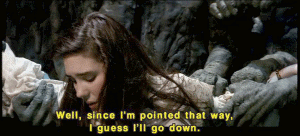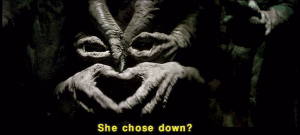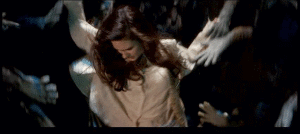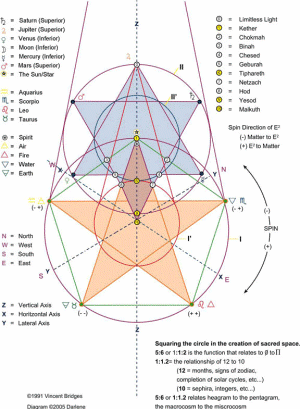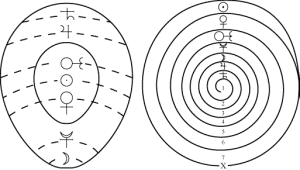A TRANSLATION OF THEOREMS 1-17 OF JOHN DEE'S MONAS HIEROGLYPHICA
by Nancy Turner and Teresa Burnes
NOTICE: THIS WORK MAY BE PROTECTED BY COPYRIGHT
YOU ARE REQUIRED TO READ THE COPYRIGHT NOTICE AT THIS LINK BEFORE YOU READ THE FOLLOWING WORK, THAT IS AVAILABLE SOLELY FOR PRIVATE STUDY, SCHOLARSHIP OR RESEARCH PURSUANT TO 17 U.S.C. SECTION 107 AND 108. IN THE EVENT THAT THE LIBRARY DETERMINES THAT UNLAWFUL COPYING OF THIS WORK HAS OCCURRED, THE LIBRARY HAS THE RIGHT TO BLOCK THE I.P. ADDRESS AT WHICH THE UNLAWFUL COPYING APPEARED TO HAVE OCCURRED. THANK YOU FOR RESPECTING THE RIGHTS OF COPYRIGHT OWNERS.
Translators’ Notes
Since the writers of the accompanying article[1] on the Hieroglyphic Monad worked from this translation, it seems appropriate to include it here. This is part of a much larger work in progress forthcoming from Waning Moon Press, which includes translations of the long dedicatory preface to Maximillian, the letter to printer William Silvius, and the remaining theorems. Thank you to Darlene for providing the color frontispiece, and Alan Moore for the line drawings and help in deciphering the handwritten Greek within the Latin Monas Hieroglyphica.
We encourage those seriously studying Dee’s Hieroglyphic Monad to attempt their own translation, or if that is not possible, to at least closely compare the different versions available. One soon finds that much of Dee’s word play in Latin loses its resonance when translated, and by taking the most logical English equivalent — say, circle for Circulus—many of the multiple levels of meaning start to fade. Where Dee's words seem most confusing or mix languages, one almost always finds a nod to the Hermetic tradition, as in the oddly rendered Stilbon perfecting Mercury on the frontispiece scroll. We’ve noted these things when possible, but that is no substitute for making the exploration on one’s own. Similarly, in working through one’s own translation, one is left to ponder why Dee has chosen to capitalize certain words, oddly space others, arrange the text around graphics in a particular way, and insert accents which don’t always follow usual typography rules. We’ve commented on this to a very limited degree, and noted where he’s switched from Latin to Greek, but again these comments are no substitute for one’s own study and exploration. One might also want to look closely at Dee’s Propaedeumata Aphoristica, whose frontispiece displays the same Monad glyph, suggesting it is at least in part structured around the same concepts.[2]
We followed this translation process: Dr. Turner, who has studied more of classical and medieval Latin but less of Dee and Hermeticism, occasionally consulted the 1964 C. H. Josten translation which has become the default favorite of critics writing in English, and the 1982 translation to modern German by Agnes Klein, while making her own, literal-as-possible translation of the Latin text. I then compared her English translation to Josten’s and to J.W. Hamilton-Jones’s oft-reprinted and oft-criticized 1946 translation available on the web and recently reprinted with a new introduction, consulted the commentaries by all three, and looked for further commentary and analysis of Dee’s Greek references to place them within the most appropriate Hermetic current.[3] As you can see from a comparison of three of the shortest theorems (three which also seem unusually straightforward compared to the rest of the work), even these differ from translator to translator.[4] We also consulted the 1925 French translation by Grillot de Grivy, but in less detail due to our own language limitations. Then, based on the new insights I gained from Turner’s translation and our theorem-by-theorem discussion about which of several possible English words would be closest equivalent to Dee’s Latin or Greek, I wrote the endnotes you see here and the bibliography.
As one moves further through the Monas, the differences in translation become much harder to navigate and both of the previous English translators seem to make errors or omissions, though Josten makes many fewer than Hamilton-Jones. Hamilton-Jones, while easier to read, seems to work mainly by paraphrase, clearly has preconceived ideas about what he is translating, and provides no notes on why he has chosen particular words or what the originals were, though he does offer a commentary that refers the reader to other alchemical writers expressing similar ideas. Josten, on the other hand, scrupulously tries to keep to a literal translation and provides the Latin side-by-side with his English translation and notes, but often loses the beauty (and occasionally the meaning) of the language in his wordiness. Their translation errors show that neither man completely understood the work he was translating, though Josten is much more honest in saying so.[5]
Both C. H. Josten and Agnes Klein include valuable notes on why they have translated a particular passage a certain way, and we have reproduced some of those here.
Teresa Burns
August, 2007
The Hieroglyphic Monad
Of John Dee, London
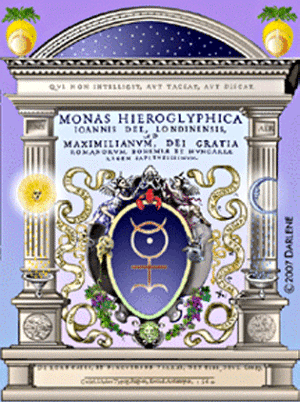
Mathematically, Magically, Cabalistically, and Anagogically Explained
to the most wise Maximilian, King of the Romans, of Bohemia, and of Hungary.
One who does not understand should be silent or learn.
[Words on the scroll around the monad, with other markings[6]:]
Mercury becomes parent and the king of all planets when perfected by stable, pointed Stilbon[7], [8]
May God give thee of the dew of heaven, and of the fat places of the earth, Gen. 27[9]
Printed by Willem Silvius, Royal Typographer, Antwerp, 1564.
Theorem I
By means of the straight line and the circle,[10] the first and simplest production and representation of things was made in the light,[11] as were non-existent things and those that are hidden behind the veil of Nature.
Theorem II
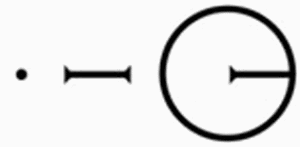
The circle without a straight line cannot be artificially created, nor a straight line without a point. Consequently, everything, properly, began from the point and the monad.[12] And whatever is strived for by the periphery of the circle, no matter how big it is, can in no way succeed without the ministry of the central point.[13], [14]
Theorem III
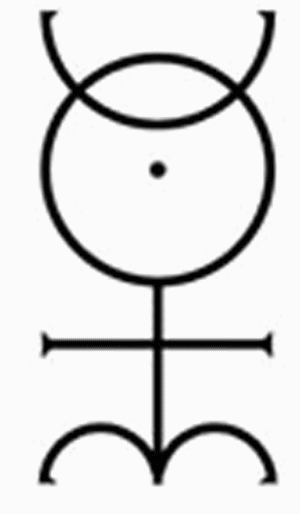
Therefore the middle point, which we see in the center of the HIEROGLYPHIC MONAD,[15] represents the EARTH, around which the SUN, the MOON and the other Planets complete their paths.[16] And in this movement, since the SUN assumes the supreme dignity,[17] we depict it (because of its excellence) by means of a complete circle with a visible center.
Theorem IIII
Although the semi-circle of the moon is above the Sun, as it were, and comes first, nevertheless the Moon regards the SUN as lord and king; the Moon even seems to rejoice over the sun’s form and vicinity, since the Moon, in one way, emulates the size of the Sun’s radius (or so it appears to the ordinary person) and in another way the moon constantly turns its light toward the Sun. And finally, the Moon so desires to be filled by the SUN’S rays, that it, so to speak, transforms into the Sun and disappears completely from the sky, until it appears again after a few days in the form of a little horn, exactly as we have depicted it.
Theorem V
And most definitely by bringing the lunar semi-circle to the solar completion, one day is made out of morning and evening.[18] Thus this would be the first day on which the LIGHT[19] of the Philosophers was made.
Theorem VI

Here we see the SUN and the MOON supported by a rectilinear cross. It can reasonably, and appropriately enough, hieroglyphically signify a TERNARY as well as a QUATERNARY. It represents a TERNARY through the two straight lines and the point common to them both, a uniting[20] point, as it were. It represents a QUATERNARY from the 4 straight lines, including 4 right angles, each one being repeated twice (for this purpose). (And thus an OCTAD, very secretly, presents itself, in a way in which I doubt our predecessors, the Magi,[21] ever observed, and which you[22] will note with great attentiveness). The magical TERNARY of the first fathers and wise ones arose from the BODY, the SPIRIT, and the SOUL, through which we here have the first SEPTENARY manifested, [arising] to be sure, from the two straight lines AND a common point, and from the 4 straight lines that are separated BY one point.
Theorem VII
The elements that are removed from their natural seats and whose homogeneous parts are scattered, will teach experimenters that the elements naturally return to their places by means of straight lines. Thus it will not be absurd [to say] that the secret of the FOUR[23] ELEMENTS (into which all elementary things can in the end be dissolved) is affirmed by means of 4 straight lines that expand from a single and indivisible point into 4 opposite directions. Here you will carefully note what the Geometers teach: a LINE is produced from the FLOWING OF A POINT. And using this same principle, we point out that this is also the case in our mechanical magic, because the lines indicating our elements are produced by the continuous fall of DROPS (which are like physical points) [moving] as though they are FLOWING.[24]
Theorem VIII
Moreover, the cabalistic expansion of the QUATERNARY, according to the customary way of counting (when we say one, two, three, four) produces the DENARY. As Pythagoras used to say, “1, 2, 3, and 4 make ten.” It is not by chance then that the rectilinear CROSS (that is, the twenty-first letter of the Roman alphabet[25]), which was considered to have been created from 4 straight lines, was chosen by the most ancient of the Latin philosophers to represent the Denary. It was decided that its location in the alphabet was to be where the TERNARY, multiplying its strength by the SEPTENARY, situates the letter.
Theorem IX
One will also see that this coincides very well with the SUN and MOON of our MONAD, since through the magic of the same 4 elements a very exact SEPARATION is made in their lines, and therefore by means of the circumference of their lines (for according to the rules of Geometry, regardless of how large the given lines are, a circle can be drawn) a CONJUNCTION of the circle was made in the SOLAR complement. So one cannot fail to see how well the proportion of the DENARY of the cross serves the SUN and MOON[26] of our MONAD.
Theorem X
The sign of the zodiacal[27] Aries, which is very well known to everyone, has, according to the custom of astronomers, this (rather sharp-edged and pointed) form:[28] [29]. And it is well known that from this place in the heavens, it manifests the beginning of the fiery triplicity. For this reason, we have added the astronomical sign of Aries in order to signify, that (in the practical use of this MONAD), the ministry of fire is required. And thus we have briefly completed one hieroglyphic consideration of our MONAD, which we want to express in a singular[30] hieroglyphic construction as follows:
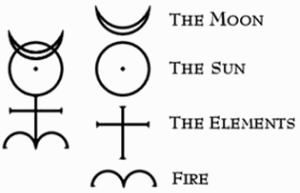
THE MOON AND SUN OF OUR MONAD DESIRE THEIR ELEMENTS, IN WHICH THE DENARIAN PROPORTION WILL RULE, TO BE SEPARATED, AND THIS IS TO BE DONE WITH THE MINISTRY OF FIRE.
Theorem XI
The mystical sign of Aries, which is formed out of two semi-circles connected at a common point, stands very fittingly at the place of the equinoctial Nykthemerons.[31] The time of twenty-four hours, in the mode of the equinox,[32] denotes our most secret Proportions.[33] I say “our” with reference to the Earth.[34]
Theorem XII
The oldest wise ones, the Magi, have passed down to us the hieroglyphic signs of the five planets, all of which have been constructed from the signs for the MOON and the SUN, along with the hieroglyphic sign of the elements and of Aries, as for example you see fashioned here.
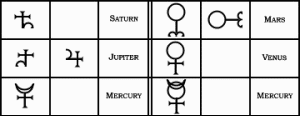
It will not be difficult to explain each of these figures hieroglyphically [using] our previously established foundations. First of all, we’ll speak paraphrastically about those [signs] that contain characteristics of the Moon, then we’ll speak about those [signs] that contain solar characteristics. When our LUNAR nature first revolved around our Earth by means of the science of the elements, it was mystically called SATURN.[35] And from the same occasion it also received the name JUPITER[36] and maintained a more secret shape. And [the oldest wise ones] denoted the Moon more obscurely after the third time it [revolved] by means of the elements. This they usually call MERCURY. You see how LUNAR it is. Some wise ones want to say that Mercury is produced by the FOURTH Revolution. This will not, however, be in contradiction to our secret proposition.[37] In this way, the purest magical spirit[38] will carry out the work of the whitening[39] instead of the Moon, and by means of its spiritual virtue, with us ALONE, and as in an ordinary, natural day, it would speak hieroglyphically without words, introducing and IMPRINTING into the very pure and simple Earth, which is prepared by us, those 4 geogamic[40] figures, or in their place, that other figure.[41]

Theorem XIII

Is not the mystical character of MARS formed out of the hieroglyph for SUN and ARIES, along with the intervention of the elements (to some extent)?[42] And VENUS, I ask—isn’t it formed by a fuller unfolding of the SUN and the Elements? Thus these planets look at the revolution of the SUN and its work of reviving with fire, in whose progress that other Mercury-- -- who is in reality the uterine twin[43] of the first one [the Mercury of lunar character] is finally apparent. In the same way that the lunar and solar magic of the elements is completed, this hieroglyphic messenger speaks very clearly to us; we want to more attentively fix our eyes on him and listen to him. (BY THE WILL OF GOD) he is that most famous MERCURY of the Philosophers, MICROCOSM, and ADAM.[44] Indeed, some very clever people used to put the SUN itself in his place and rank.[45] This we cannot achieve in our present age, unless we put in charge of this work made of coral-gold[46] a certain SOUL[47] who has been separated from his BODY by means of the Pyrognomic[48] Art.
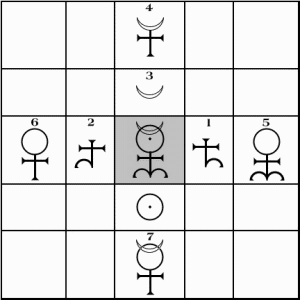
THE PRINCIPLE MONADIC ANATOMY OF THE ENTIRE REALM OF ASTRONOMIA INFERIOR[49]
This act, however, is difficult to carry out and is also very dangerous because of the fire and the sulphuric vapor that arise from it. But one thing is certain: this SOUL will be able to achieve wonders, no doubt tying with indissolvable bands LUCIFER[50] and even the FIRE BEING[51] to the disc of the MOON[52]—or at least of MERCURY[53]—and in the third place (as they want it)—(in order to complete our SEPTERNARY[54] number)—showing us the SUN of the PHILOSOPHERS. You see how exactly and openly the ANATOMY of our HIEROGLYPHIC MONAD corresponds to the SACRED MYSTERIES[55] signified in both of these theorems [12 and 13].
Theorem XIIII
It has already been clearly confirmed that this whole Master Work depends upon the SUN and MOON, which is something the thrice-great HERMES[56] once taught us when he asserted that the SUN is its father and the MOON its mother.[57] We know with no doubt that it is nourished in the LEMNIAN EARTH[58] by LUNAR and SOLAR rays which exert a singular influence around it.
Theorem XV
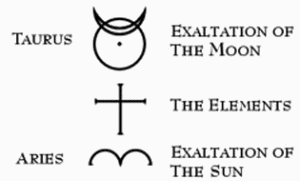
Consequently, we suggest to philosophers that they examine the labors[59] of the SUN and the MOON around the earth; for instance, in what way the moon, while the SOLAR radiance is focused upon Aries,[60] receives a new dignity of light in the nearest sign (namely Taurus[61]) and is EXALTED above its innate powers.[62] The old ones explained this proximity of the LUMINARIES[63] (the most notable of all) by creating a certain mystical character with the distinguished name of TAURUS.[64] This is very well known, in fact, to be the EXALTATION of the MOON and has been handed down all the way from the first age of the Human Race (among the teachings of the astronomers). Yet only those understand the mystery, who have become the absolute high-priests of the mysteries. For a similar reason, TAURUS is said to be the HOUSE[65] of VENUS:[66] indeed the house of pure[67] and fertile conjugal love, since “Nature rejoices in Nature,”[68] as the great Ostanes[69] concealed in his most secret mysteries.
[We suggest to philosophers that they examine[70]] by what means the SUN, having experienced some eclipses of its light, receives the strength of MARS, and also by what means in this same house (namely of our Aries) [the SUN] is said, as it were, to be triumphant in its EXALTATION.[71] Our MONAD demonstrates most clearly and perfectly these most secret mysteries by means of the hieroglyphic figure of TAURUS which is depicted here, and by means of [the hieroglyphic figure] of MARS, which we presented in theorems 12 and 13, which the SUN moving towards ARIES reveals. So from the present theory, another cabalistic anatomy of our MONAD shows itself, which is a true and artful description: THE EXALTATIONS OF THE MOON AND THE SUN ARE SUPPORTED BY THE SCIENCE OF THE ELEMENTS.
NOTATION
I suggest there are two things to be especially noted here: one, that the hieroglyphic symbol of Taurus exactly represents to us the dipthong [72] of the Greeks, which is always the genitive[73] singular ending of the first declension.[74] Two, that by the proper turning (of the two signs), the letter ALPHA appears to us in two ways: either with the circle and semicircle merely touching, or (as here) with them mutually intersecting.[75]
Theorem XVI
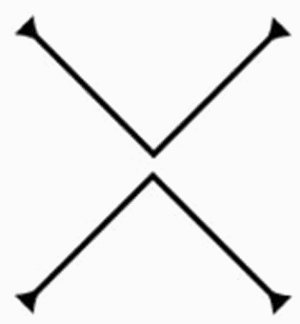
At this point in the discussion of our proposition[76] we must philosophize a little concerning the CROSS.[77] Although our CROSS is composed of two straight lines (as we said), and the lines are of equal length, they do not divide each other into equal lengths.[78] But in the mystical arrangement of our cross we wanted to have both equal and unequal parts,[79] to affirm that in the power of two lines divided in this manner is hidden also (because they are equal in size) the virtue of an equilateral CROSS.[80] For, a certain JUSTICE of NATURE[81] very generally requires that a CROSS is to be drawn with equal straight lines, and in the dividing of the lines cross-ways [that is, in the form of an ‘X’] its lines ought to be equal to begin with. According to this norm of justice concerning an equilateral CROSS (for example, the twenty-first letter of the Latin alphabet [=X]), we will propose, after careful consideration, the following: if a straight line is produced that crosses diagonally anywhere through the common point of a rectilinear, rectangular, and equilateral CROSS with oppositely positioned angles, then the parts of the Cross are entirely the same and equal on both sides of this diagonally-crossing straight line.[82] Their forms are the same as the letter of the Latins that is accepted to be the FIFTH vowel [=V], and was most commonly used among the most ancient philosophers of the Latins to denote the number FIVE.[83] And I think this was by no means done by them illogically, since it takes the shape of half of the number ten. From this form, which has been divided into two parts (as a result of the hypothetical division of the Cross), both [parts] of which represent the number FIVE (although one [part] is upright and the other is upside down), we point out that it portrays a multiplication of the squaring of a square root (which amazingly falls upon a CIRCULAR NUMBER, namely, FIVE).[84] From this it definitely is not irrational[85] that TWENTY and FIVE are produced (for that letter [i.e. V] is number twenty [in the Latin alphabet] and is the fifth vowel). Now we will consider another aspect of this equilateral CROSS, an aspect which is the same as that of our MONADIC CROSS. We suggest a that similar division of the cross into two parts be made (as was done above), from which another letter of the Latin alphabet is revealed which is [also] a doubled figure—one is upright, the other upside down and backwards, which (from the most ancient custom of the Latins) has been used to represent the number FIFTY.[86]
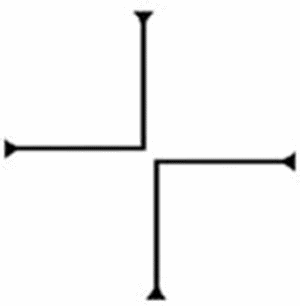
This, it seems to me, is first established: that this is indeed a sign of the QUINARY, essentially derived from our DENARY of the Cross; and that from this position, the Cross, as the greatest of all mysteries, is the most perfect/complete hieroglyphic sign.
Thus the power of the DENARY, EMBRACING its QUINARY virtue, congratulates the NUMBER FIFTY on its offspring. OH MY GOD, HOW GREAT ARE THESE MYSTERIES?[87] And even the name of that letter, EL,[88] seems to refer to this denarian virtue of the Cross, since it is placed in the middle between the first letter of the alphabet and the Denary of the Cross [i.e. the letter X], and is tenth in order from either one.[89] And since we have now pointed out that there are two complete parts in the CROSS (considering now only their numerical meaning), it is very clear that the number ONE HUNDRED arises from them. But if they [i.e. the two letters L] are multiplied with each other by the law of squares, they will produce for us the number Two Thousand Five Hundred. If this SQUARE is compared to the square of the previously mentioned circular number and is then applied to it, the CENTARY is restored again.[90] Thus, when this CROSS displays itself in the context of the power of its DENARY, it can be recognized as the number ONE HUNDRED. And since this character of the CROSS is of but one kind,[91] so it also represents unity.[92] Here therefore (besides this other very worthy and distinguished thing) we have learned from these theories of the CROSS to count and to proceed in this fashion: One, Ten, One Hundred. We are thus raised up by the DENARY proportion of the CROSS.
Theorem XVII
As is evident from the sixth theorem, FOUR right angles can be considered to be in our CROSS,[93] and the preceding theorem teaches that the sign[94] of the QUINARY[95] can be attributed to each one of them, the right angles of course being arranged in one way, but maintaining another position. The same theorem explains the production of the hieroglyphic symbols of the number FIFTY.[96] Thus, it is very clear that the CROSS generally denotes the DENARY;[97] and that in the order of the Latin alphabet, it is the twenty-first letter (whence it was the case that the wise ones called the Mecubalists[98] signified the number twenty-one with the same letter[99]); and finally, it can be considered very simply to be seen as one sign, no matter what kind of, and how much, other power it has. From all of these things together, we see it can be concluded by means of a very good cabalistic explanation that our CROSS can signify to initiates, in a remarkably shortened way, the number TWO-HUNDRED-FIFTY-TWO.[100] Namely, FOUR times FIVE, FOUR times FIFTY; TEN; TWENTY ONE; and ONE, add up to TWO-HUNDRED-FIFTY-TWO; which number we can deduce in still two other ways from our previous [statements].[101] Thus we recommend to cabalistic Tyrians[102] that they scrutinize this same [number], studying it in such a brief space, concluding the varied, skillful production of this Master Number to be worthy of the consideration of philosophers. I will not conceal from you here another memorable initiator to the mysteries.[103] Our CROSS having suffered itself to be divided into two different letters, and as earlier we considered/analyzed their [i.e. the letters’] numerical virtue in a certain way, we will now compare in turn THEIR VERBAL POWER WITH THAT CROSS, because from this may be born LUX (LIGHT),[104] a WORD we perceive with the highest admiration, finally and masterfully (through the harmony and agreement of the TERNARY in the unity of the word).
Bibliography
1. Berthelot, M 1887, Collection des anciens alchimistes grecs, G. Steinheil, Paris, France.
2. Betz, HD 1986, The Greek Magical Papyri in Translation, Including the Demotic Spells, University of Chicago Press, Chicago, IL.
3. Bridges, V 2003 (trans and commentary), “The Emerald Tablet ,” in Wiedner, J & Bridgets V. The mysteries of the great cross of Hendaye, Destiny Books, Rochester, VT.
4. Bridges, V & Burns, T 2007, “Olympic Spirits, the Cult of the Dark Goddess, and the Seal of Ameth.” Journal of the Western Mystery Tradition, vol. 2, no. 13, <http://www.jwmt.org/v2n13/book.html>.
5. Burns, T & Moore, JA 2007,“The Hieroglyphic Monad of John Dee Theorems I-XVII: A guide to the Outer Mysteries..” Journal of the Western Mystery Tradition, vol. 2, no. 13,<http://www.jwmt.org/v2n13/signs.html>.
6. Clark, R 1996, "Commentary on the Emerald Tablet of Hermes", The Alchemy Web Site, <http://www.levity.com/alchemy/rawn_cla.html>.
7. Crane, G 1990s, The Perseus Digital Library, Tufts University, Classics Department, <http://bibpurl.oclc.org/web/2155>; <http://bibpurl.oclc.org/web/2155>; <http://www.perseus.tufts.eduhttp://medusa.perseus.tufts.edu/>.
8. Dee, J 1564, Monas Hieroglyphica, G. Silvius, Antwerp, <http://www.billheidrick.com/Orpd/Dee/JDMH.pdf>.
9. Dee, J 1591, Monas Hieroglyphica, J Wechel & P Fischer, Frankfort, Germany.
10. Dee, J 1564 (Latin), 1964 (English), CH Josten (trans and commentary),“A Translation of John Dee’s Monas Hieroglyphica.” Ambix 12, 84-221.
11. Dee, J 2000, The Hieroglyphic Monad, JW Hamilton-Jones (trans and commentary), Samuel Weiser, York Beach, ME.
12. Dee, J 1925, La monade hiéroglyphique de Jean Dee, G de Grivy (trans and commentary). Bibliothèque Chacornac, Paris, France.
13. Dee, J 1982, Die Monas-Hieroglyphe, A Klein, (trans and commentary). Ansata-Verlag, Interlaken, Switzerland.
14. Dee, J 1564 (Latin), 1947 (English),The Hieroglyphic Monad, JW Hamilton-Jones (trans), Twilight Grotto, <http://www.esotericarchives.com/dee/monad.htm>.
15. Dee, J, Shumaker, W & Heilbron, JL 1978, John Dee on Astronomy : 'Propaedeumata aphoristica' (1558 and 1568), (Latin and English), University of California Press, Berkeley, CA.
16. Dee, J 1558, Propaedeumata aphoristica Ioannis Dee Londinensis, de praestantioribus quibusdam naturae virtutibus, ad Gerardum mercatorem rupelmundanum, mathematicu & philosophum insignem, London, England.
17. Economou, G 1972, The Goddess Natura in Medieval Literature, Harvard University Press, Cambridge, MA.
18. Euclid, Billingsley, H, & Dee, J 1570, The Elements of Geometrie of the Most Auncient Philosopher Euclide of Megara, Iohn Daye, London, England.
19. Euclid & Heath, TL 1956, The Thirteen Books of Euclid's Elements, Uniform Title: Elements, English, 2d ed., rev. with additions edn, Dover Publications, NY. Available on-line w/ minor edits by Joyce <http://aleph0.clarku.edu/~djoyce/java/elements/elements.html>.
20. Fried, M 2003,“The Use of Analogy in Book VII of Apollonius’ Conica” Science in Context, 16(3), Cambridge University Press, Cambridge, England.
21. Gessmann, GW 1991, Die Geheimsymbole der Chemie und Medicin des Mittelalters : eine Zusammenstellung der von den Mystikern und Alchymisten gebrauchten geheimen Zeichenschrift, nebst einem kurzgefassten geheimwissenschaftlichen Lexikon, Sändig Reprint Verlag, Vaduz, Germany.
22. Goldschmidt, G 1938, Der Ursprung der Alchimie, CIBA-Zeitschrift, Basel, Switzerland.
23. Hamilton-Jones, JW 2000 (preface, trans, and commentary), The Hieroglyphic Monad, reprinted with an introduction by Diane di Prima. Samuel Weiser, York Beach, ME.
24. Hermes, 2004, The Emerald Tablet of Hermes: Multiple Translations, Kessinger Pub, Whitefish, MT.
25. Josten, CH (trans and into) 1964,“A translation of John Dee’s Monas Hieroglyphica.” Ambix 12, 84-221. Excerpt from introduction available: <http://www.esotericarchives.com/necronom/josten.htm>.
26. Klein, A 1982 (German) (preface, trans, and commentary), Die Monas-Hieroglyphe von John Dee aus London,Ansata-Verlag, Interlaken, Switzerland.
27. Lévi, E 1972, Transcendental Magic: Its Doctrine and Ritual, A Waite (trans and commentary), Samuel Weiser, NY.
28. Niermeyer, JF, Kieft, C van de, Burgers, JWJ 2002, Mediae Latinitatis lexicon minus = Medieval Latin dictionary = Lexique latin médiéval, Brill, Leiden; Boston, MA.
29. Regardie, I, Monnastre, C & Weschcke, C 1989, The Golden Dawn : a complete course in practical ceremonial magic : the original account of the teachings, rites, and ceremonies of the Hermetic Order of the Golden Dawn (Stella Matutina), 6th ed., Rev. and enl. / complete index compiled by David Godwin ed., Llewellyn Publications, St. Paul, MN.
30. Ruska, J 1970, Turba Philosophorum, Reprint edn, Springer-Verlag, Berlin.
31. Scott, W (trans and commentary) 1985, Hermetica : The Ancient Greek and Latin Writings Which Contain Religious or Philosophic Teachings Ascribed to Hermes Trismegistus, 1st Shambhala edn, Shambala, Boston, MA.
32. Shumaker, W (trans and commentary) 1978, John Dee on astronomy : 'Propaedeumata Aphoristica' (1558 and 1568), Latin and English, University of California Press, Berkeley CA.
33. Simpson, J A, Weiner, ESC & Oxford University Press 1989, The Oxford English Dictionary Clarendon Press; Oxford University Press, < http://encompass.library.cornell.edu/cgi-
bin/checkIP.cgi?access=gateway%5Fstandard%26url=http://etext.library.cornell.edu/oed; http://encompass.library.cornell.edu/cgi-
bin/checkIP.cgi?access=gateway%5Fstandard%26url=http://etext.library.cornell.edu/oed >.
34. Swenson, J, 2007. Personal communication.
35. Various pseudonymous authors 2005, “Monas Theorem XIII-XV pyrognomic Greeks”, Yahoo Groups (e-group conversation thread messages 918, 928-932), <http://groups.yahoo.com/group/AlchemistRoyalAdvisorDrJohnDee/messages>.
36. Various pseudonymous authors 2005, “Monas Theorem XV Greek Ostanes”, Yahoo groups (e-group conversation thread messages 994, 1006, 1008-1010.) <http://groups.yahoo.com/group/AlchemistRoyalAdvisorDrJohnDee/messages>.
37. Traupman, JC 1995, The Bantam new college Latin & English dictionary, Rev. and enl edn, Bantam Books, NY.
38. Westbrook, M, 2007. Personal communication.



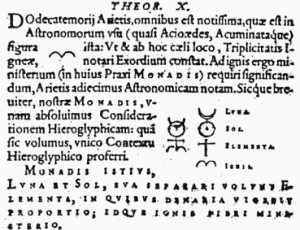
 Ut et ab hoc caeli loco, Triplicitatis Ignae, notari Exordium constat. Ad ignis ergo ministerium (in huius Praxi MONADIS) requiri significandum, Arietis adiecimus Astronomicam notam. Sicque Breviter, nostrae MONADIS, Unam absoluimus Considerationem Hieroglyphicam: quam sic volumus, unico Contextu Hierglyphico proferri. MONADIS ISTIUS, LUNA ET SOL, SUA SEPARARI VOLUNT ELEMENTA, IN QUIBUS DENARIA VIGEBIT PROPORTIO; IDQUE IGNIS FIERI MINISTERIO. / The (almost dagger-like [?] and pointed) symbol of the zodiacal division of Aries, as it is used by the astronomers, is very well known to all, and also is it well known that from this place in the heavens the beginning of the fiery triplicity is counted. We have added [in the symbol of our monad] the astronomical sign of Aries, therefore, to signify that (in the practice of this monad) the aid of fire is required. And so we have briefly brought to a conclusion one way of hieroglyphically considering our monad, which we want to be put forth only in a hieroglyphical context, as [here] follows:
Ut et ab hoc caeli loco, Triplicitatis Ignae, notari Exordium constat. Ad ignis ergo ministerium (in huius Praxi MONADIS) requiri significandum, Arietis adiecimus Astronomicam notam. Sicque Breviter, nostrae MONADIS, Unam absoluimus Considerationem Hieroglyphicam: quam sic volumus, unico Contextu Hierglyphico proferri. MONADIS ISTIUS, LUNA ET SOL, SUA SEPARARI VOLUNT ELEMENTA, IN QUIBUS DENARIA VIGEBIT PROPORTIO; IDQUE IGNIS FIERI MINISTERIO. / The (almost dagger-like [?] and pointed) symbol of the zodiacal division of Aries, as it is used by the astronomers, is very well known to all, and also is it well known that from this place in the heavens the beginning of the fiery triplicity is counted. We have added [in the symbol of our monad] the astronomical sign of Aries, therefore, to signify that (in the practice of this monad) the aid of fire is required. And so we have briefly brought to a conclusion one way of hieroglyphically considering our monad, which we want to be put forth only in a hieroglyphical context, as [here] follows:  . Transliterated into Roman letters the word reads as
. Transliterated into Roman letters the word reads as  , monas.
, monas. = 888] .” Rather than simple disingenuity, Dee’s understanding of the Octad, part of the “most secret” teaching alluded to in Theorems XII and XV, is something Dee thinks the Magi may have known but not observed first-hand, such as a celestial event.
= 888] .” Rather than simple disingenuity, Dee’s understanding of the Octad, part of the “most secret” teaching alluded to in Theorems XII and XV, is something Dee thinks the Magi may have known but not observed first-hand, such as a celestial event. . Josten notes that the closest known Greek word,
. Josten notes that the closest known Greek word,  , means “gold-coral” and is used to refer to several different metals (p. 165 n. 50). Dee’s “misspelling” may refer us also to Greek korallion, which means coral, especially red coral. Thus this alludes to both the “Golden work” and “red earth” of the alchemists and the idea of the “Great Work” creating matter, something like an exoskeleton (like that of coral) extruded from within. [Thank you to two pseudonymous posters to the “AlchemistRoyalAdvisorDrJohn Dee” e-group (
, means “gold-coral” and is used to refer to several different metals (p. 165 n. 50). Dee’s “misspelling” may refer us also to Greek korallion, which means coral, especially red coral. Thus this alludes to both the “Golden work” and “red earth” of the alchemists and the idea of the “Great Work” creating matter, something like an exoskeleton (like that of coral) extruded from within. [Thank you to two pseudonymous posters to the “AlchemistRoyalAdvisorDrJohn Dee” e-group ( . Josten: “Cf. M. Berthelot, Collection des ansiens alchimistes grecs, vol. i (2nd part), Paris, 1887, pp. 43, 57, where [Pseudo-] Democritus and Synesius attribute this saying, which Dee quotes incompletely, to Ostanes” (p. 167 n. 58) The complete saying, “Nature rejoices in nature, nature rules over nature, and nature is the triumph of nature” can be found in the story of how Democritus, “a thrice-wise man,” was initiated into the Egyptian mysteries of Memphis by the Persian Magus Ostanes, (Berthelot, p. 57) and nods as much to this Greek alchemical tradition as to the particular quote. A similar speech occurs in the Turba Philosophorum (Klein p. 124 n. 105). A similar speech appears elsewhere as that of the angel Amnael to Isis: Nature takes pleasure in Nature; Nature triumphs over Nature, Nature rules Nature. A human begets a human, the lion begets the lions, the dogs beget the dogs, grain begets grain: learn this from the farmer Achab. What is begotten against nature is a monster incapable of life. The Adepts teach this: only gold brings forth gold again at the harvest. This is the revealed mystery. (Goldschmidt pp. 1961-1962, translation Turner)”.
. Josten: “Cf. M. Berthelot, Collection des ansiens alchimistes grecs, vol. i (2nd part), Paris, 1887, pp. 43, 57, where [Pseudo-] Democritus and Synesius attribute this saying, which Dee quotes incompletely, to Ostanes” (p. 167 n. 58) The complete saying, “Nature rejoices in nature, nature rules over nature, and nature is the triumph of nature” can be found in the story of how Democritus, “a thrice-wise man,” was initiated into the Egyptian mysteries of Memphis by the Persian Magus Ostanes, (Berthelot, p. 57) and nods as much to this Greek alchemical tradition as to the particular quote. A similar speech occurs in the Turba Philosophorum (Klein p. 124 n. 105). A similar speech appears elsewhere as that of the angel Amnael to Isis: Nature takes pleasure in Nature; Nature triumphs over Nature, Nature rules Nature. A human begets a human, the lion begets the lions, the dogs beget the dogs, grain begets grain: learn this from the farmer Achab. What is begotten against nature is a monster incapable of life. The Adepts teach this: only gold brings forth gold again at the harvest. This is the revealed mystery. (Goldschmidt pp. 1961-1962, translation Turner)”. , pronounced like the “ou” in English “soup.” A dipthong is a glide from one vowel sound to another.
, pronounced like the “ou” in English “soup.” A dipthong is a glide from one vowel sound to another. or
or  , (aleph lamed), a name of God, and a suffix on most of the angelic names used in Dee’s system of magic (Michael, Gabriel, Uriel, Raphael, Anael). In this context “denarian” also refers us back to the ten sephira of
, (aleph lamed), a name of God, and a suffix on most of the angelic names used in Dee’s system of magic (Michael, Gabriel, Uriel, Raphael, Anael). In this context “denarian” also refers us back to the ten sephira of  , a person who gave instruction to candidates for initiation into the Eleusian or other mysteries.
, a person who gave instruction to candidates for initiation into the Eleusian or other mysteries.